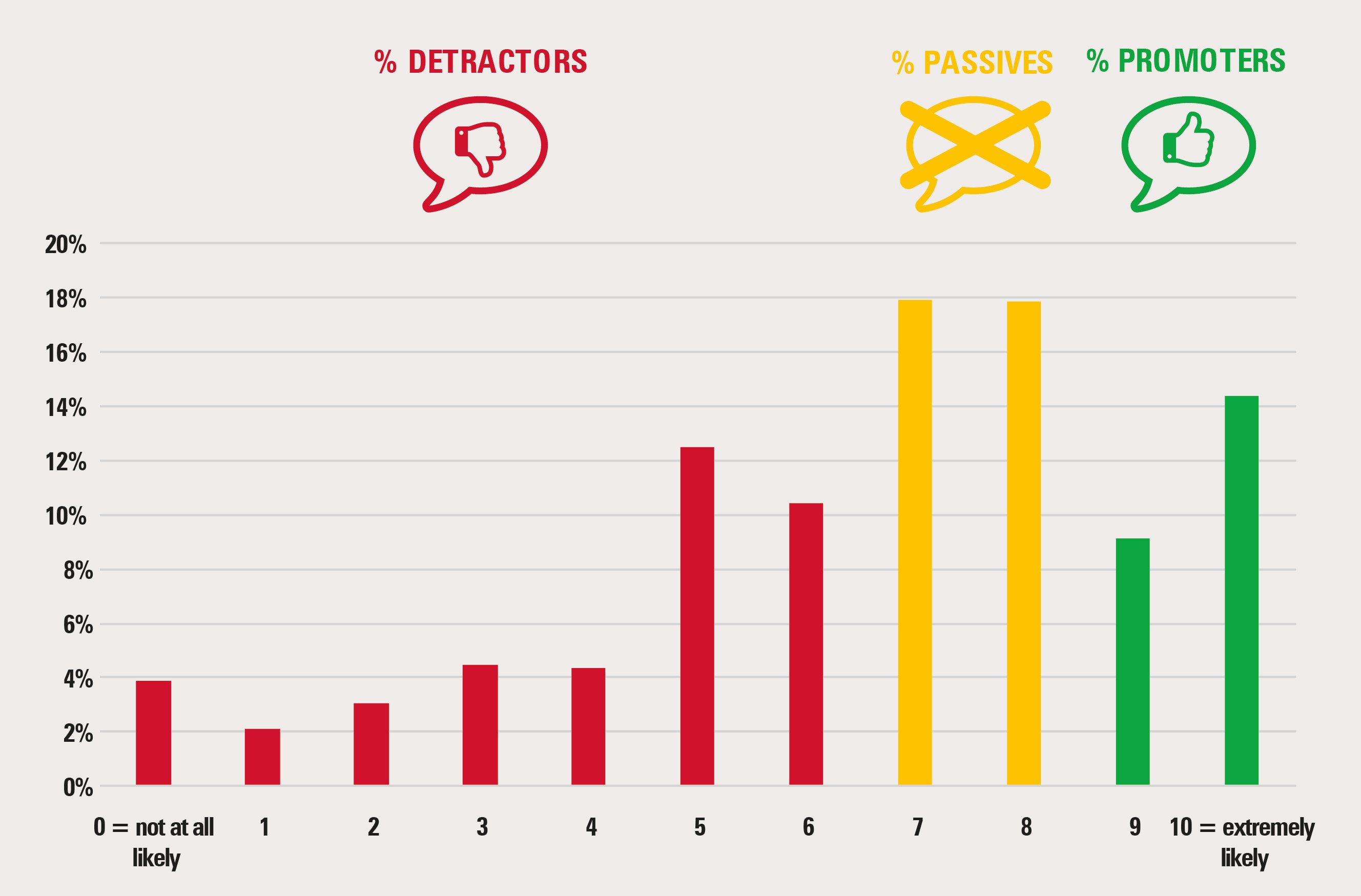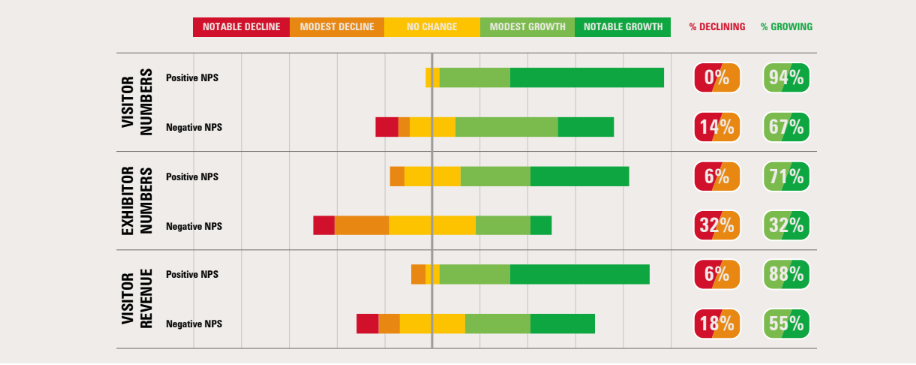What is NPS and why should event professionals care?
So what exactly is a Net Promoter Score (NPS)?
Developed by Bain & Company and Satmatrix, Net Promoter Score (NPS) is a way to understand a customer’s perception of your product or service. It’s widely used across many industries and allows different sectors to benchmark themselves against each other – for example event planners could use it to compare their performance to other events, or even to other service sectors like hospitality or banking.
It is one of the most important questions we ask our clients to include in every post-event survey they conduct.
It leverages advocacy – the likelihood to recommend to a friend or colleague – as a way of understanding many different drivers of perception including satisfaction, ease of customer journey and return on investment in a single question. Respondents, in this case event attendees or sponsors, are asked to rate how likely they are to recommend the event to a friend or colleague in the industry.

This graph is an example of how respondents are categorised based on their response as Promoters, Passives or Detractors. Net Promoter Score is then calculated as the difference between the promoters and the detractors and is expressed on a scale from -100 to 100. So an event with a plus score has relatively more promoters than detractors, whilst an event with a negative score has more detractors.
So why does this matter?
The impact of NPS has been extensively researched across many industries. With a finite number of potential attendees and sponsors in most sectors, when advocacy is low, it will get harder and harder to attract new attendees and sponsors and the existing customers will be increasingly sensitive to any price rise and over time may even withdraw their support.
It is an important “leading indicator” as to how your event might perform commercially in the future.
Explori has conducted research with events around the world that shows a positive NPS from exhibitors and sponsors means an event is more likely to experience commercial growth in three key areas:
- Attendee numbers
- Exhibitor numbers
- Exhibitor revenue

Interestingly events with a positive exhibitor NPS are growing their sponsor and exhibitor revenue faster than their exhibitor numbers, indicating they may also be finding it easier to up-sell their existing customers to new and higher value services.
Want to know more about NPS and other aspects of event exhibitor and sponsor experience? You can download our full report here, covering the experience of exhibitors all round the world.
NPS for virtual vs live events
At Explori, we have been benchmarking attendee experience metrics including NPS for virtual events since March 2020 and the results are clear. Advocacy is higher for virtual events than for live events.
The data indicates that attendees are more likely to recommend virtual events to their colleagues and friends. But we have to ask why that is? Are virtual events delivering a better experience than face-to-face events?
It is highly likely that the reason virtual events are seeing a boost in their recommendations relative to live events is because of ease of access. There is much less heavy lifting involved with making a virtual recommendation. If you’re recommending an event halfway across the world that would require flying to another country, booking accommodation and taking time away from family and friends, you’ll probably want to make sure that is a must-attend event before making that recommendation.
However if you are sending a colleague or friend a link that they can access from their computer in the comfort of their home it doesn’t require as much consideration past the point of the event providing good content. And this is just the tip of the iceberg with what we have been seeing in the data regarding virtual events experience.
>>> Download our latest research on virtual events
How to improve your event Net Promoter Score
In some circles NPS is viewed as the holy grail of measuring attendee experience. Oftentimes it is the single metric monitored by event organisers to understand if their event is doing well. Though NPS is an important metric to measure, it is often better understood in the context of other key metrics, such as Overall Satisfaction.
Overall satisfaction is highly correlated with NPS. If you measure attendee objectives and Overall Satisfaction in your post-event survey you can run a correlation analysis to discover which objectives are driving satisfaction at your event. By focusing attention on how to improve your satisfaction score you should see higher Net Promoter Scores for your events.
.png?width=150&height=61&name=explori_logo%20(1).png)


